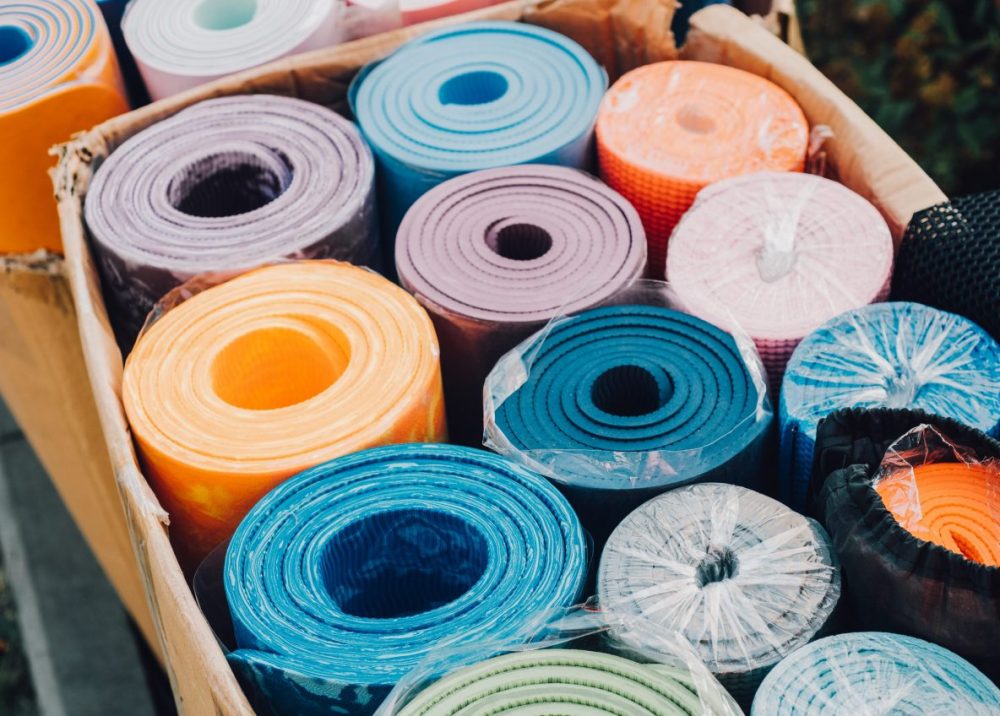
For any kind of yoga practice the mat needs to be easy to store and portable, yet comfy and cushy. Why not environmentally friendly?
This guide will help you find a yoga mat you can be blissfully happy with — one that suits your practice, priorities, lifestyle, values, and budget.
Right Thickness
The thickness of your yoga mat has a lot to do with how comfortable it is — too thin, and your knee may get banged up during crescent lunge. A thick yoga mats (some as thick as 1/4 inch) can make it harder for you to feel a strong connection to the floor. However, a standard yoga mat is about 1/8-inch-thick, while the thickest are about 1/4 inch. Travel yoga mats are a mere 1/16 inch thick.
Right Material
The material dictates its texture, stickiness, eco-friendliness, and sponginess (how much it yields to pressure), and how it wears over time.

Most standard yoga mats are made of PVC, otherwise known as vinyl. Earth-friendly options include natural and recycled rubber, jute, and organic cotton or natural cotton (which means the fabric is not treated with synthetic finishes during manufacturing). In general, PVC has the most “give” of any yoga mat material; jute and cotton have the least.
Right Texture
The texture of your yoga mat dictates how much traction it provides, slipping and sliding you do. It provides physical barriers to sliding (whereas stickiness relies on suction). And because texture affects the way a yoga mat feels, it’s also a component of overall comfort.
Texture can be either man-made (a pattern of raised bumps, for example) or dictated by the materials — jute yoga mats have an organic roughness to them, while PVC yoga mats, though slightly textured, have a softer feel.
For anti-skid then avoid PVC mats (the traditional sticky yoga mats), look for a rubber, jute, or cotton yoga mat that has a raised, tactile pattern. Some eco-friendly yoga mats provide much traction even though they don’t have the traditional “sticky” feel.
Right Stickiness
A sticky yoga mat keeps you from sliding all over the place and helps you maintain your alignment as you move from one pose to another, as well as when you hold poses for several seconds. PVC yoga mats have the highest sticky factor.
Eco-Friendly
Choose earth-friendly yoga mats that are typically made from natural or recycled rubber. These yoga mats may also include natural materials, such as jute or organic cotton. Avoid yoga mats made of PVC (the traditional sticky mat), which does not break down in landfills and is difficult and costly to recycle.
Right Price
Typically, a basic 1/8-inch-thick, plain solid-color PVC sticky yoga mat will be toward the low end of the price range. From there you may pay more for patterns, designs or logos; premium thickness; antimicrobial treatments; and cool textures, especially raised tactile patterns. Eco-friendly yoga mats tend to be toward the high end of the price range.
Right Style
Go ahead and pick your favorite color, pattern, or print. After all, you’ll be seeing a lot of it in downward dog.
Happy shopping!